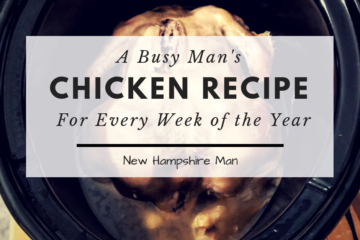The spring of 2018 marks the finest looking soil with the easiest spring garden cleanup we’ve had after five years growing annuals in this garden.
It would be naive to suggest that anyone can know everything about all the factors at play, but I believe these five things had the biggest influence on the generation of our rich soil and the super easy cleanup and bed preparation.
I would never claim to know all there is to know about anything, let alone gardening.
My approach is to learn as much as I can, and to think objectively about what I learn.
The basic approach of Permaculture is to recognize the systems that are at play and to use the advantages of every part of the system to improve the function of the system as a whole.
The garden (my garden) is a natural system that I manipulate to grow as much food as possible in the most easy and sustainable way.
As we pass mid May 2018, I have been blown away by how easy it has been to prepare my garden for this year’s plantings, and by how healthy and rich the soil is.
But what has REALLY blown me away is the number of WORMS!
My god! They are everywhere. Big ones, tiny ones. I didn’t put any of them in there.
Here are some of the primary factors that, I think, have led to this apparently beautiful, rich soil full of worms.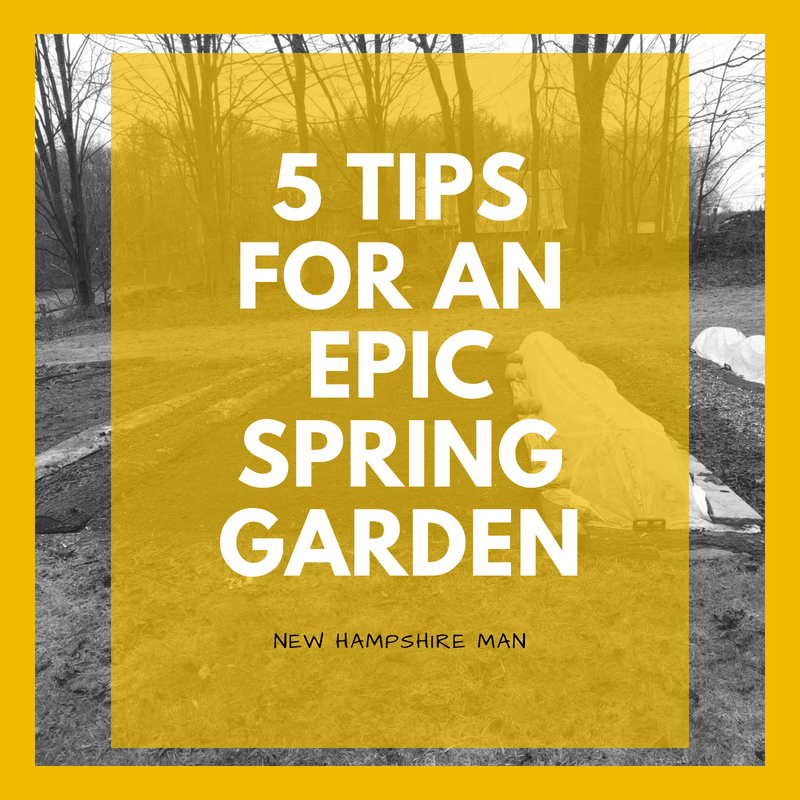
Key Factors to a Rich Garden
I attribute the best looking garden ever to these 5 things:
Minimal Fall Cleanup
It’s so convenient it almost seems like a joke.
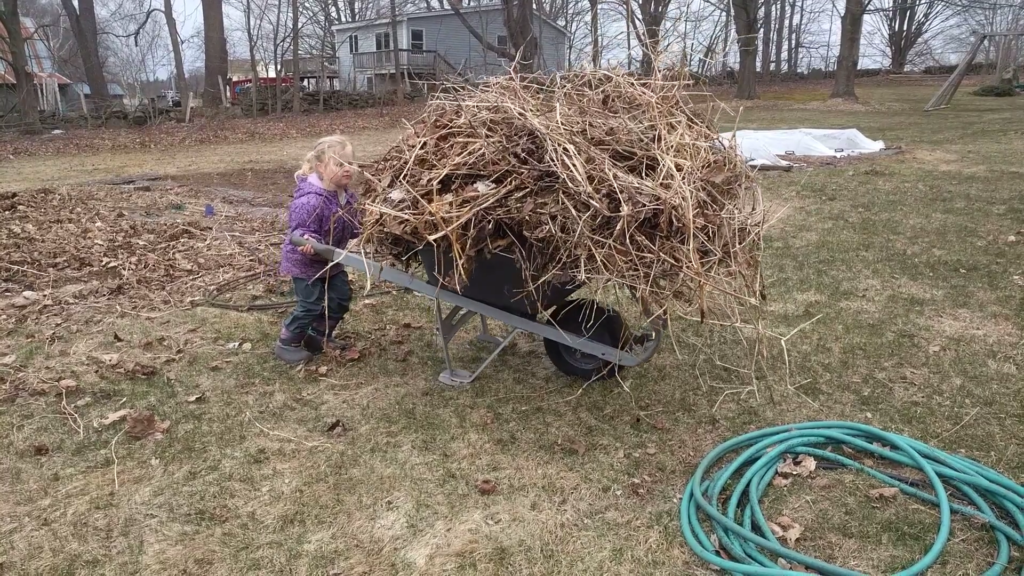
Starting at one end, I rolled up last year’s tomatillos and dropped it in the wheelbarrow for my big helper to take it to the chickens.
At the end of your summer, just leave your garden alone. It’s a nice way to end a busy garden year.
The reason is, as I’ve heard from podcasts and other people who actually know what they’re talking about, some beneficial animals get established in your annuals and overwinter in your garden. Some type of caterpillar comes to mind as being one of those key critters.
That, to me, is just a bonus. What seemed to work well is that leftover annuals make a nice cover to the soil. This spring I literally started at one end of the row and rolled all the leftovers up, put the roll in the wheelbarrow, and dropped it off with my chickens.
The soil required a minimal amount of finishing work and it was pretty much ready to plant in.
I don’t till.
Deep mulch (cardboard and chips)
Bare soil freaks me out.
So, no matter what I’m doing, I always try to find a way to cover the soil.
One method that I’ve grown particularly fond of is putting down cardboard and then putting a thin layer of woodchips on top of the cardboard. Not a lot of chips. Just enough to keep the cardboard from blowing away.
That cover of cardboard and chips lets plenty of water through, blocks the sunlight and serves as a great mulch for a single season path, or for a row cover prior to planting annuals that require a decent separation, like squash.
The cardboard and chips last most of the season keeping weeds at bay and come the following spring there’s almost nothing left. I rake up whatever is left, mainly a few remaining chips, and the soil underneath is ready to go.
There is some controversy around using chips in the garden. I don’t worry about it much, but I do prefer to use chips that have composted in a pile for a year or so.
Slab-wood Gardening
You saw it here first, I think.
I’ve never seen anyone use slabs in the garden before, but I do, and I love it.
A slab is the half round that comes off a log when squaring it up at the sawmill. I buy my lumber from a local sawyer who lets me take some slabs.
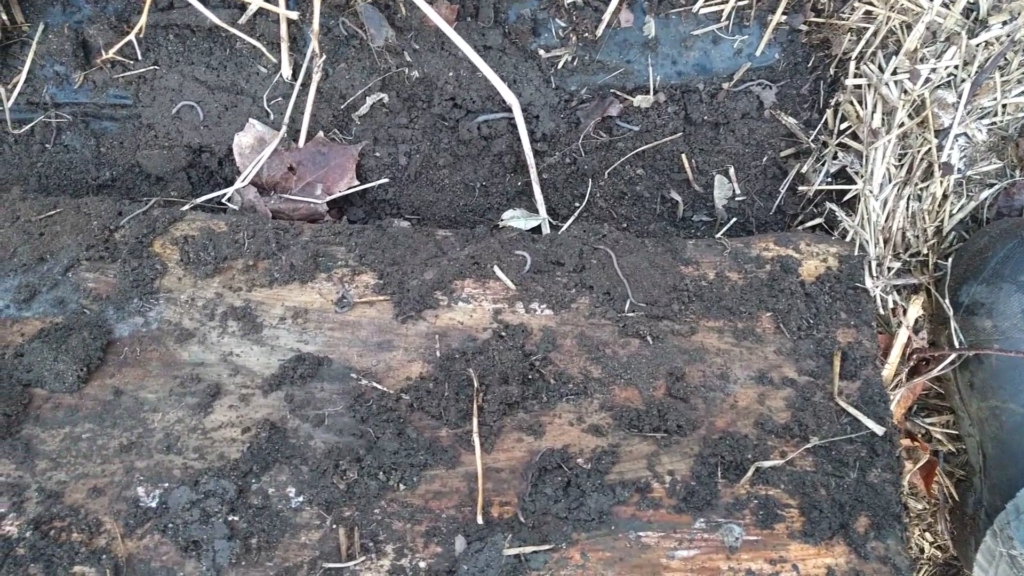
Upon flipping over a slab that’s been in the garden since last year I was pleasantly surprised to see an abundance of worms.
I lay the slabs flat side down in the garden to serve as walkways between rows. Nothing grows through them, and when I rolled them over this spring there were a million worms hanging out underneath.
Garden with kids?
Kids are drawn to walking on the slabs. That ALONE is worth it to put slabs in. Anything that keeps the little ones from walking all over the vegies.
Fall green manure
Again, nothing freaks me out like having uncovered soil. So, when I harvest late summer crops, instead of leaving that row empty, I sow what’s called a green manure cover crop. Buckwheat is a good option because it comes up quick, but I usually lean on Johnny’s Fall Manure Mix.
Plants like vetch and clover look so pretty and most of the plants in the mix don’t overwinter. None of them form a thick root mass so in the spring you just rake it up and give it to the chickens. Again, the soil underneath is pretty much ready to go.
Did I mention that I don’t till?
Epic Compost Mulch throughout the year
Weeding sucks unless you are real good at keeping up with it.
Whenever I weed I follow up with a nice layer of slightly composted grass clippings mixed in about 50/50 with the compost my chickens make for me.
In my humble opinion, it’s brilliant.
The grass clippings make just enough of a mat to keep other weeds down, and the compost serves as a top dressing of slow release fertility to the crops.
A few disclaimers for you lawn nazis out there:
- I do have a lawn and I love playing in it in bare feet with my kids and my dog.
- There is a bagger on my mower and all my grass clippings get dropped off and piled up for my chickens to work on.
- As much as I love my lawn, I would never dream of wasting my time and money on irrigating or fertilizing it.
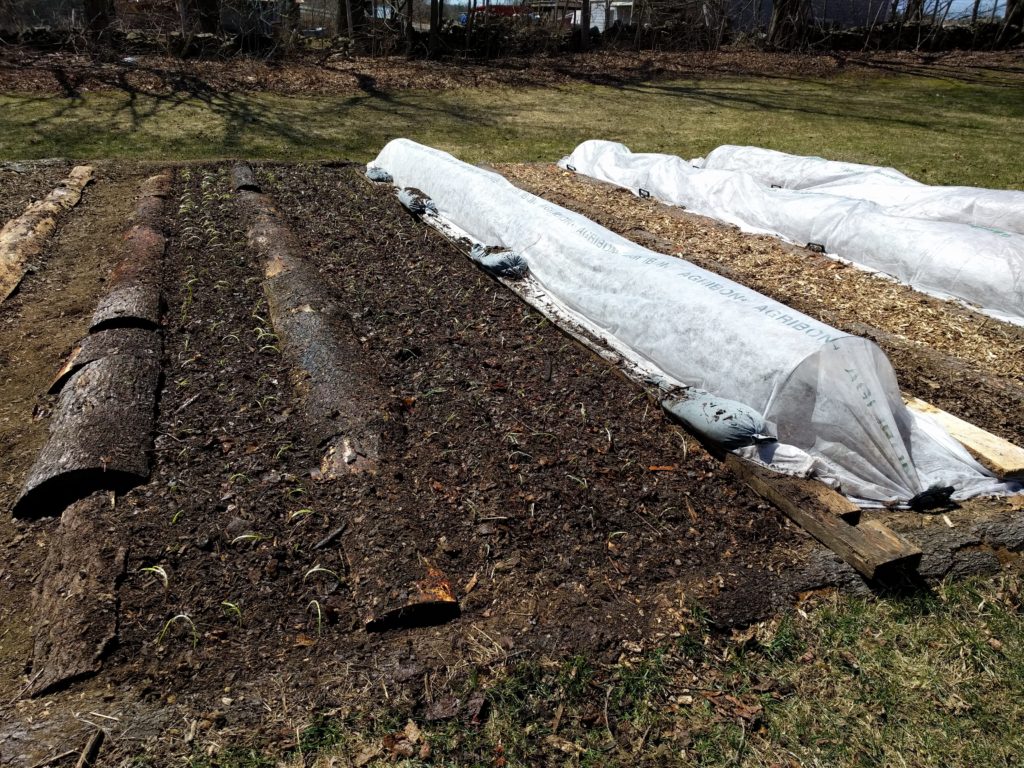
Before the grass grows I mulch with last year’s chicken shredded leaves mixed with good compost. Here applied on the freshly planted onions. Grass and compost make an equally awesome mulch around plants.
Five Years in the Making
I really need to drive home that I’m not pretending to be the expert. I’m just passionate about learning how to grow food and trying new ideas. Over the past 5 years it seems that some of them are working out.
As time goes on I will continue to try to recognize the systems in and around my garden to optimize my yield per unit of time committed, in the most regenerative way.
Please run with any idea that strikes a chord with you and let me know how it works out.

